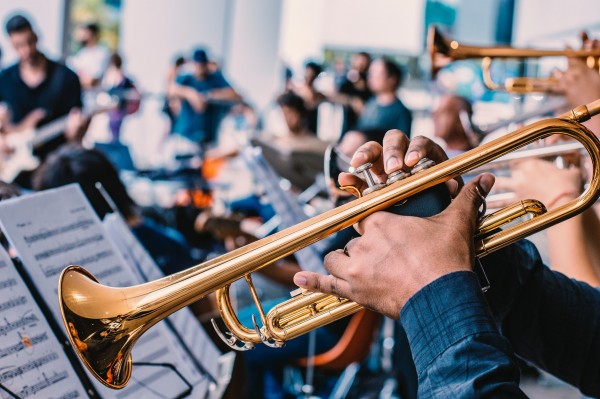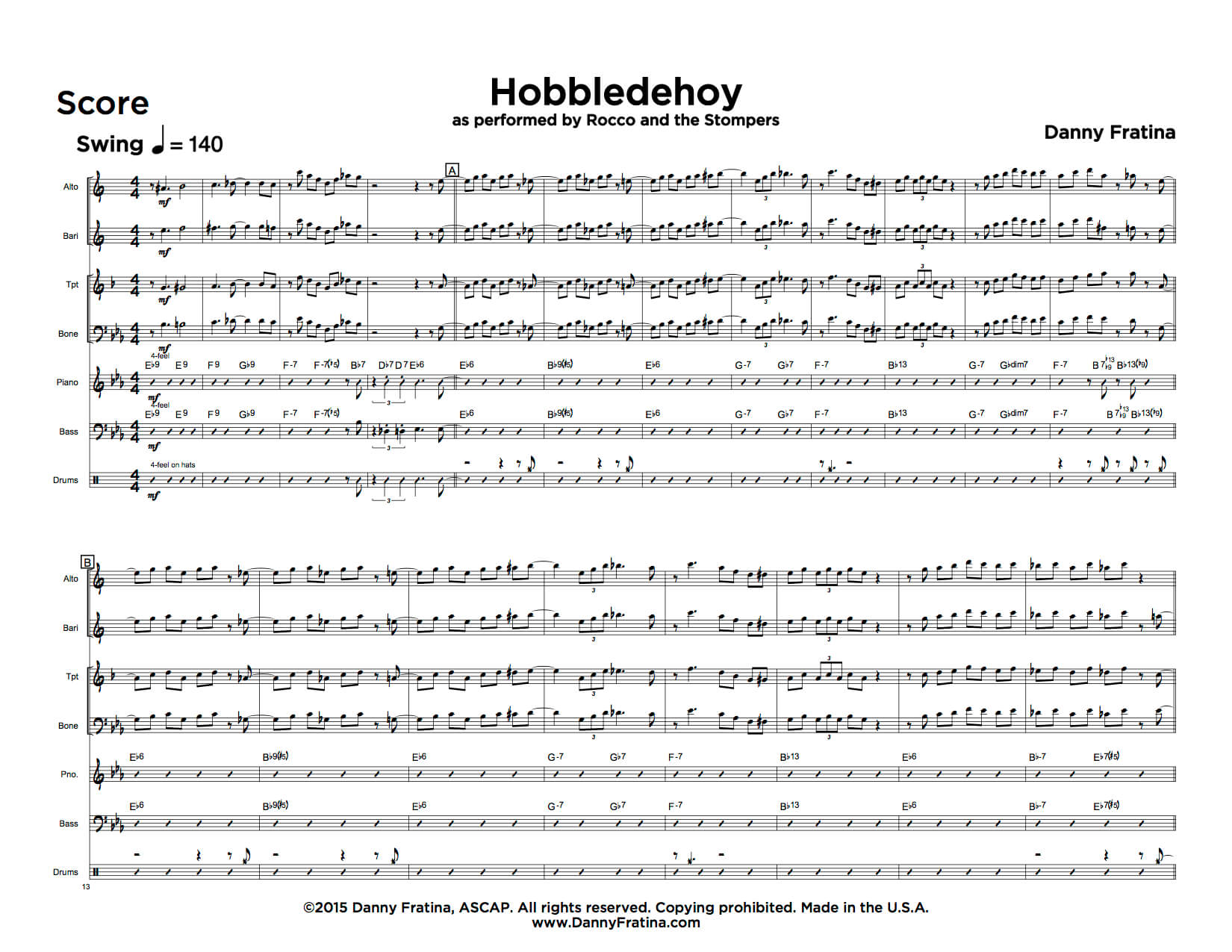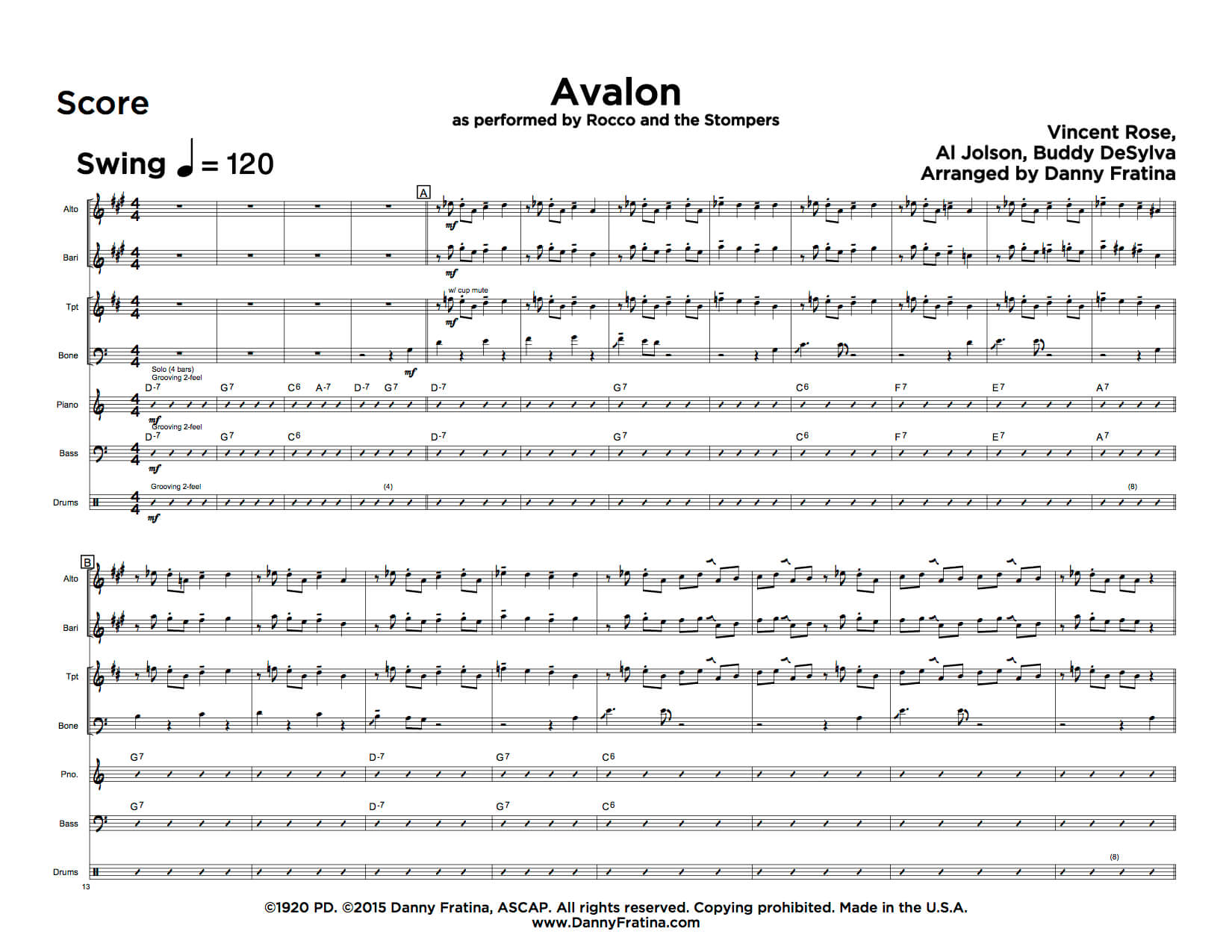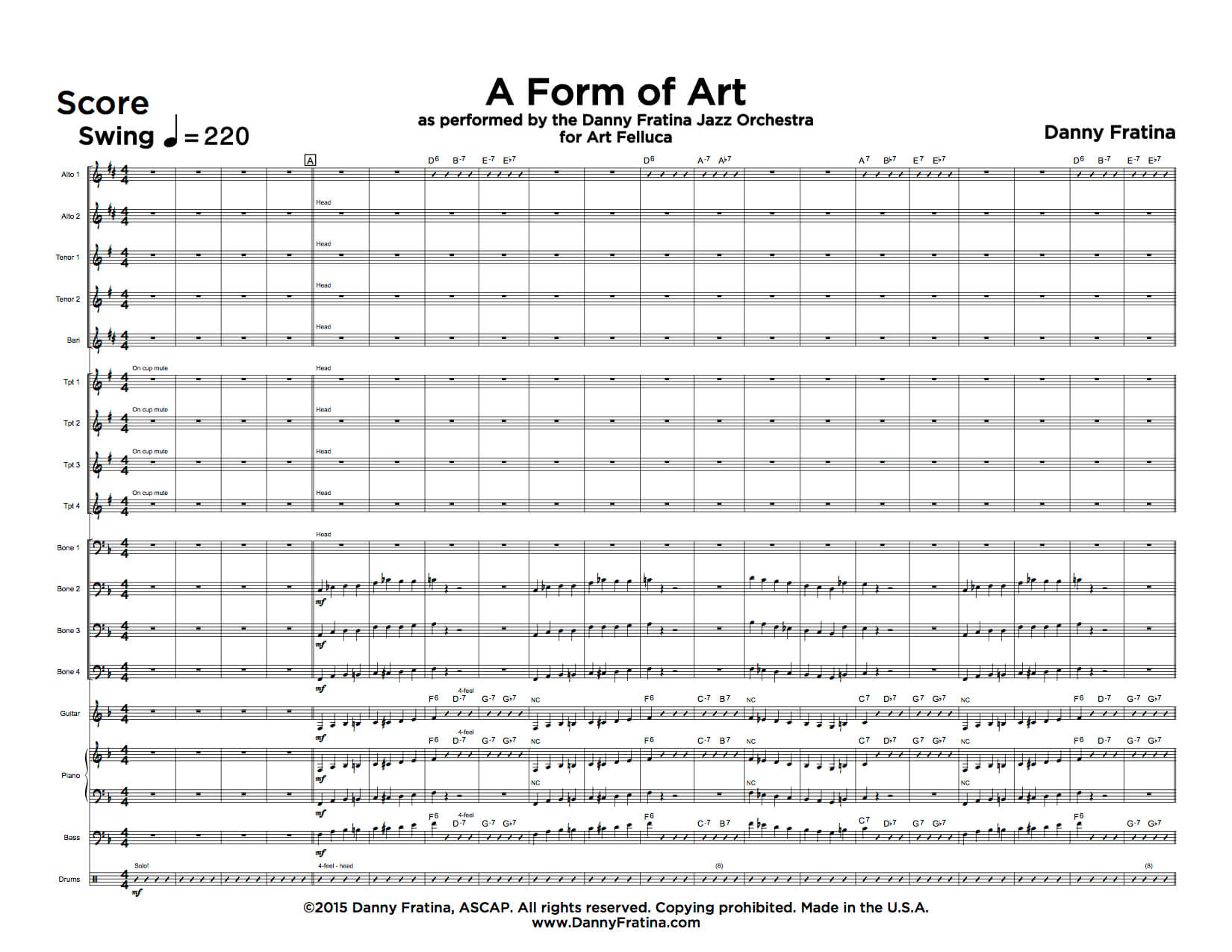
The biggest difference between practicing lead trumpet material at home and actually performing lead trumpet material when it matters – on a gig – is the live element. Here is an exercise for practicing lead trumpet at home to simulate this live experience, build your chops, and work on your sight-reading skills:
- Pick out a set’s worth of lead trumpet parts that you have professional recordings of. 1 hour of music will be more than enough.
- Sort them by highest note: The first song in your practice set list will have the lowest top note, and the last song in your practice set list will have the highest top note. For example, I’ll pick a Benny Goodman chart that peaks at G on top of the staff as my first tune (easy enough, right?), and for my last tune in the set, a Sinatra chart that has multiple Gs one octave higher.
- Set up a playlist of all the music using a player of your choice (i.e. YouTube, Spotify, iTunes, etc.): Be sure that the order of songs matches the order of your set list.
- Make sure everything else you need is ready, including mutes, a music stand, the space to practice, etc., because once we start, you won’t be able to walk away (this is a live gig after all!). Make sure that if you are using speakers that the music will be loud enough to be heard over your own playing, or if you are using headphones make sure it’s just loud enough that you can hear yourself (avoid earbuds if possible). Then, hit the play button.
- Read the parts along with the recordings in real time. Sometimes you will only have 2-3 seconds between songs, so be ready! This actually simulates a live recording: no stopping when you make mistakes, little to no rest between songs, etc.
- Along the way, try to imitate the lead players you hear, in terms of articulation, note spacing, dynamic shaping, etc.
- Go as far into your set as you can before your chops tire out. Once you can’t effectively play through a tune, you’re done for the day. See how far you can advance in your set every day or every other day. I guarantee you will notice real progress after only a few days of this. Keep a practice journal to track your progress.
This works for any instrument, but it’s especially good for instruments that need high levels of physical endurance. If you have a book of 3rd trombone parts, this still works! If your focus is more on soloing, then you get to practice sight-reading changes without time to plan. It’s great for drummers for dealing with setups and fills and it’s great for chordal instruments to practice changes.





Leave A Comment